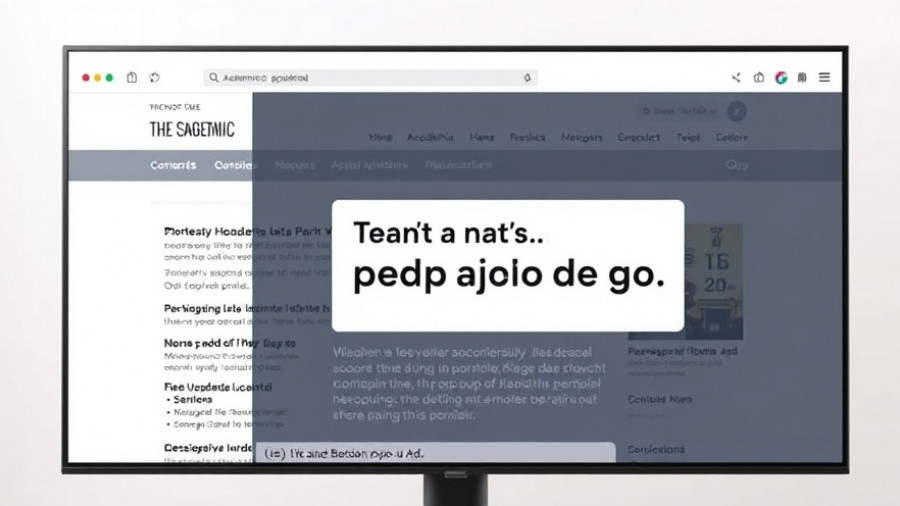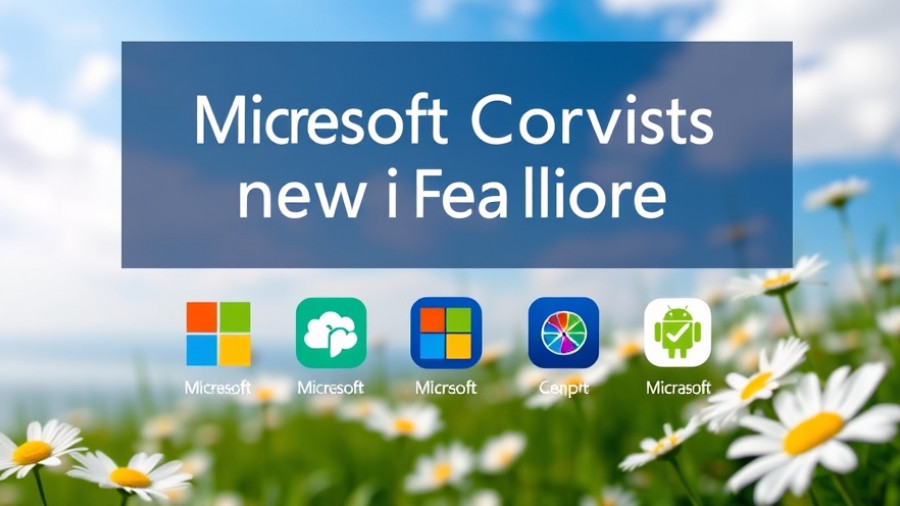
The Shift Towards Developer Control in AI
Microsoft’s recent update to Visual Studio is a significant nod to developer feedback, allowing users to customize their experience with Copilot, the AI programming assistant. This follows a growing trend within the tech community where the balance between automation and user control has become paramount. As artificial intelligence becomes more integrated into our daily workflows, understanding where and how to draw the line is essential for maintaining productivity and focus.
Understanding the New Features
Beginning with the August 2025 update of Visual Studio 2022, developers can now opt for a more measured approach to suggestions from Copilot. Rather than having helpful tips pop up with every keystroke, users have the power to delay suggestions until they've paused, reducing interruptions that can disrupt deep concentration. Furthermore, there are options to switch completions off entirely unless specifically requested by a keypress. This flexibility in control allows developers to create a coding environment that suits their workflow rather than one dictated by AI.
Why Control is Key for Developers
This change reflects a broader conversation within the tech industry around the role of artificial intelligence in programming. Many developers have expressed frustration over the constant barrage of suggestions that, while intended to be helpful, can actually hinder productivity. By allowing users to pick and choose when they receive suggestions, Microsoft is acknowledging the importance of personal focus and the various working styles of developers.
Future Predictions: The Evolving Role of AI in Development
As AI tools like Copilot continue to evolve, we may see an emerging trend where user feedback will shape the functionalities of these tools even further. Developers are increasingly expecting their tools to adapt to their needs rather than vice versa. This could lead to a future where AI assistants are more user-driven, capable of learning individual preferences and working styles to provide customized support, ensuring that developers remain at the center of the coding process while still benefiting from AI.
Counterarguments: Embracing AI vs. Maintaining Control
While many developers appreciate the new levels of control offered by Microsoft, there are also voices advocating for the broader use of AI tools. Proponents argue that by allowing AI to suggest code with less interruption, developers might uncover new ways of coding that they wouldn’t have considered otherwise. However, this viewpoint raises a significant question: How do we balance the need for innovation with the need for focused work?
Taking Action: How to Adjust Your Copilot Settings
If you're a developer looking to enhance your coding experience with Copilot, here are a few actionable insights to set up your environment effectively:
- Delay Suggestions: Go into your Copilot settings and adjust the delay for completion suggestions to strike a balance between helpfulness and distraction.
- Customize Visibility: Explore options to hide automatic suggestions until needed, ensuring that your screen remains clutter-free.
- Experiment with Partial Accept: Familiarize yourself with the partial acceptance feature, allowing you to integrate suggestions on a line-by-line basis, making the process feel more controlled.
Conclusion: The Future is Customized
In the ever-evolving landscape of technology, customization is increasingly becoming a key factor for productivity. Microsoft’s latest update acknowledges the need for developers to take control of their tools. As Copilot continues to adapt, developers can look forward to a coding experience that respects their workflow while still benefiting from the efficiencies that AI brings. It’s a significant step forward for user-centered design in programming tools.
 Add Row
Add Row  Add
Add 




Write A Comment